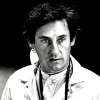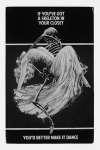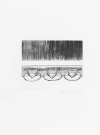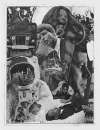James
Rosenquist
Rosenquist's billboard-sized colourful paintings and prints, with their fragmented commercial imagery, epitomise 1960s Pop Art. If you're looking for James Rosenquist original prints and editions for sale or would like to sell, request a complimentary valuation and browse our network's most in-demand works.
James Rosenquist art for sale
Discover James Rosenquist prints for sale, exclusively available through our private network of collectors. Explore signed and unsigned screenprints, lithographs, digital prints, and rare editioned proof prints by era-defining blue chip artists.
Sell Your Art
with Us
with Us
Join Our Network of Collectors. Buy, Sell and Track Demand
Biography
James Rosenquist emerged as a leading figure in the Pop Art movement of the 1960s, alongside contemporaries such as Andy Warhol and Roy Lichtenstein. Born in Grand Forks, North Dakota, Rosenquist's artistic journey took him from the American Midwest to the vibrant art scene of New York City.
Rosenquist's artistic language was shaped by his early career as a billboard painter. This commercial background, combined with his formal art education, allowed him to develop a distinctive style that blurred the lines between fine art and popular culture.
His large-scale paintings and prints, often featuring fragmented and juxtaposed images from advertising and mass media, became powerful commentaries on American consumer culture and politics.
Rosenquist's artistic career gained significant momentum in the early 1960s. His breakthrough came with the painting F-111 (1964-65), a room-sized, multi-panel work that juxtaposed images of a fighter bomber with consumer goods and references to the Vietnam War. This monumental piece established Rosenquist's reputation for creating visually complex, politically charged works.
Beyond painting, Rosenquist was also a prolific printmaker. Rosenquist’s For Love (1965), part of the 11 Pop Artists portfolio, reflects his ability to transform everyday imagery into layered, complex compositions. In For Love, Rosenquist blends disparate objects—floating fish, a hand, a coin—into a collage-like arrangement that reflects his commercial art background. Rosenquist’s work in this piece, much like the other artists in the 11 Pop Artists portfolio, demonstrates how screenprinting was pivotal to the Pop Art movement, utilising commercial techniques to question and explore the relationship between art and mass production.
Throughout his career, Rosenquist continued to push the boundaries of scale and subject matter. His 1997-8 The Swimmer In The Econo-mist was a monumental installation that covered three large canvases, reflecting his characteristic exploration of commercial and consumer imagery. This work delved into complex themes such as the relationship between economics, technology, and the environment, as well as humanity's entanglement with these forces. Notably, Rosenquist employed reflective materials and vibrant colours, creating a sense of disorientation and immersion for the viewer. The use of fragmented imagery underscores his ongoing fascination with scale, space, and the impact of technology on modern life, pushing the boundaries of traditional painting.
In March 2017, at the age of 83, Rosenquist died having shaped the language Contemporary Art.







































